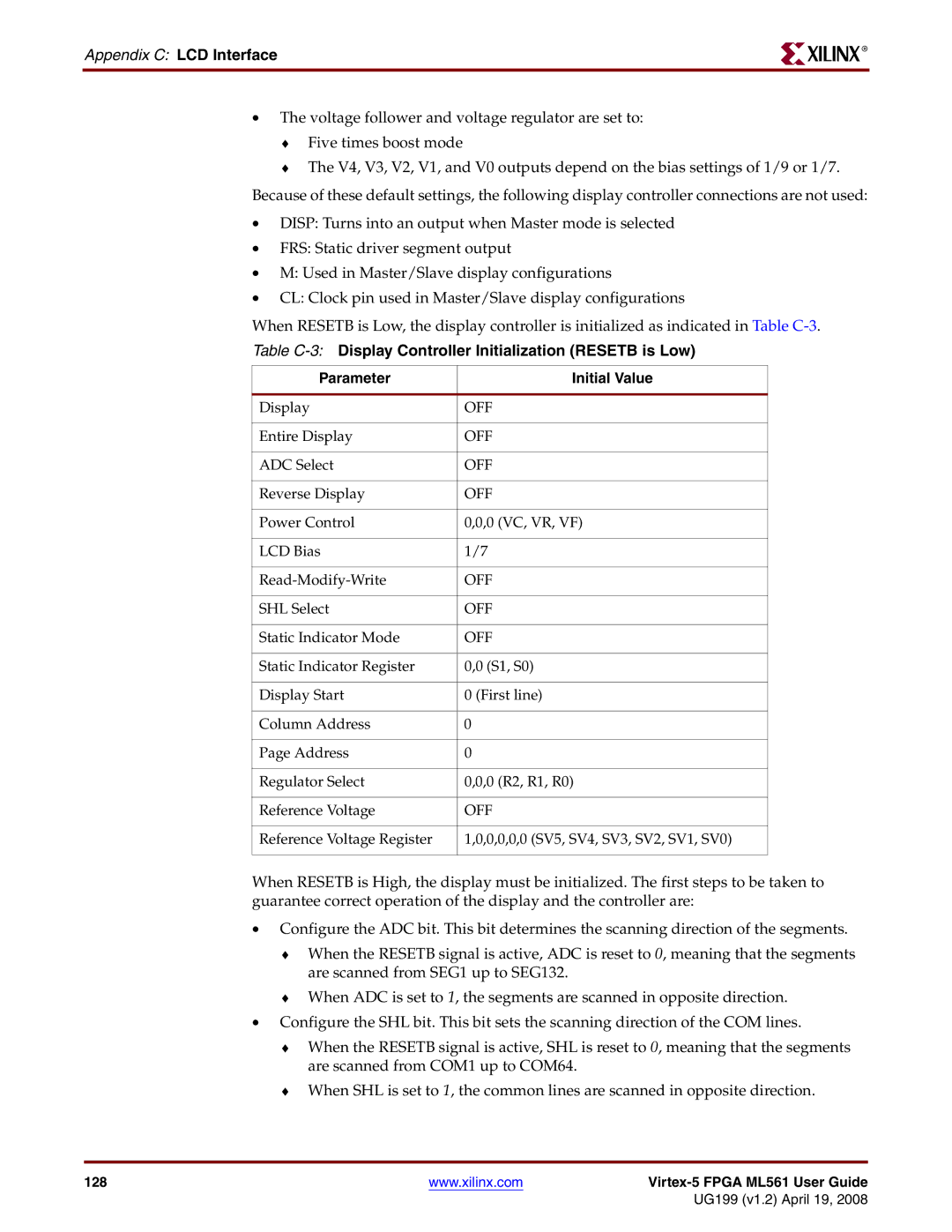
Appendix C: LCD Interface
R
•The voltage follower and voltage regulator are set to:
♦Five times boost mode
♦The V4, V3, V2, V1, and V0 outputs depend on the bias settings of 1/9 or 1/7. Because of these default settings, the following display controller connections are not used:
•DISP: Turns into an output when Master mode is selected
•FRS: Static driver segment output
•M: Used in Master/Slave display configurations
•CL: Clock pin used in Master/Slave display configurations
When RESETB is Low, the display controller is initialized as indicated in Table
Table
Parameter | Initial Value |
|
|
Display | OFF |
|
|
Entire Display | OFF |
|
|
ADC Select | OFF |
|
|
Reverse Display | OFF |
|
|
Power Control | 0,0,0 (VC, VR, VF) |
|
|
LCD Bias | 1/7 |
|
|
OFF | |
|
|
SHL Select | OFF |
|
|
Static Indicator Mode | OFF |
|
|
Static Indicator Register | 0,0 (S1, S0) |
|
|
Display Start | 0 (First line) |
|
|
Column Address | 0 |
|
|
Page Address | 0 |
|
|
Regulator Select | 0,0,0 (R2, R1, R0) |
|
|
Reference Voltage | OFF |
|
|
Reference Voltage Register | 1,0,0,0,0,0 (SV5, SV4, SV3, SV2, SV1, SV0) |
|
|
When RESETB is High, the display must be initialized. The first steps to be taken to guarantee correct operation of the display and the controller are:
•Configure the ADC bit. This bit determines the scanning direction of the segments.
♦When the RESETB signal is active, ADC is reset to 0, meaning that the segments are scanned from SEG1 up to SEG132.
♦When ADC is set to 1, the segments are scanned in opposite direction.
•Configure the SHL bit. This bit sets the scanning direction of the COM lines.
♦When the RESETB signal is active, SHL is reset to 0, meaning that the segments are scanned from COM1 up to COM64.
♦When SHL is set to 1, the common lines are scanned in opposite direction.
128 | www.xilinx.com |
|
|
| UG199 (v1.2) April 19, 2008 |
